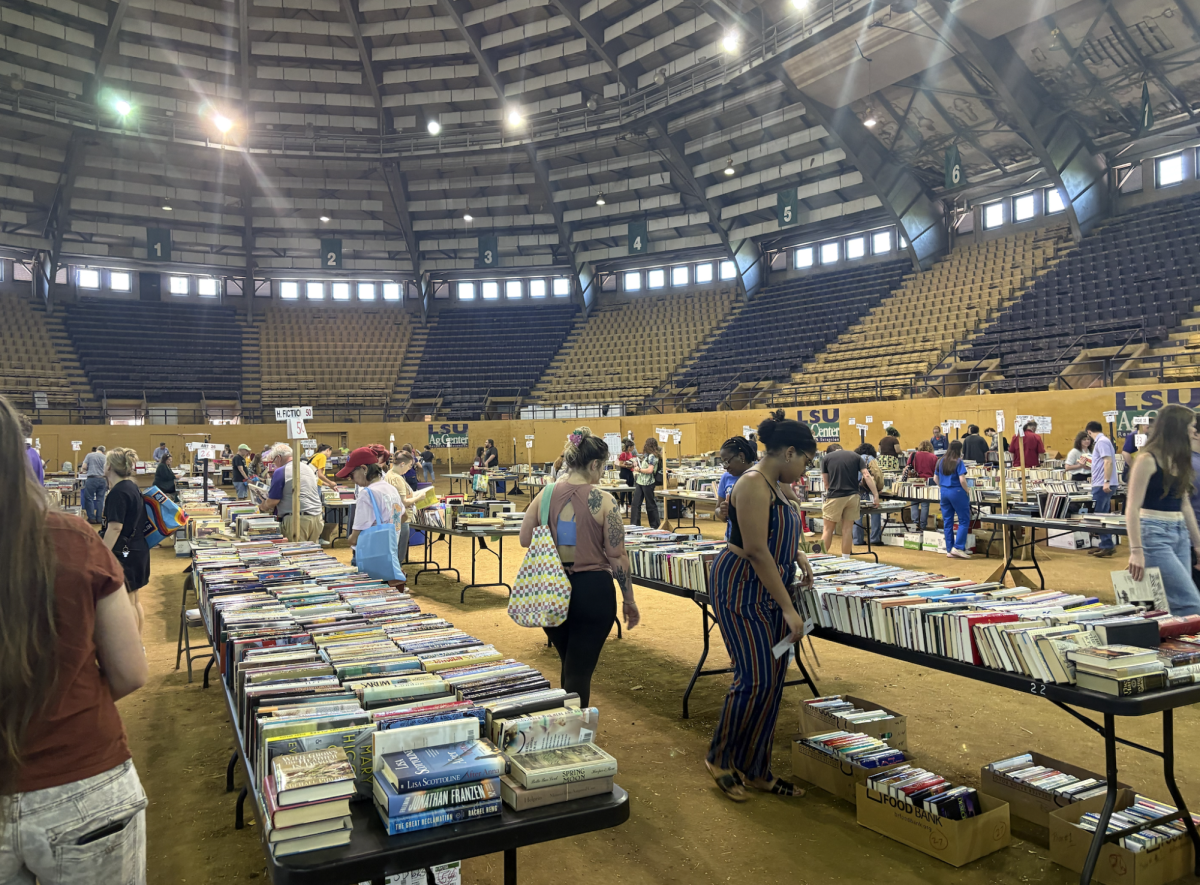Did you know that inside of LSU’s Memorial Tower there are rooms filled with memories, uniforms and objects holding value that remains forever encased?
Memorial Tower is known as the iconic spot on LSU’s campus that students gaze upon while lying on the parade grounds; however, inside the tower lies the William A. Brookshire Military Museum, a museum filled with memorabilia that reflects the university’s deep-rooted history with the military.
Visitors are met with a wonderful dome ceiling and walls coated in honor and plated with bronze. The names of the sons and daughters who gave their lives up for “God and country” are forever ingrained in corresponding Louisiana parishes. To the right, guests are sent through a time portal.
Music by Glenn Miller is softly playing throughout the exhibit, with the sophisticated sounds bringing museum-goers into the world of LSU students from the year 2000, and heartfelt quotes line the walls. A tender quote from the 2001 LSU Chancellor, William E. “Bud” Davis, can make any student feel more appreciation for the campus of LSU, especially the parade grounds.

“They are ghosts on the LSU Parade Ground,” Davis’ quote reads on the wall. “You have only to close your eyes and vision of massed troops in World War II uniforms pass in review–and behind them, bringing up the rear; are long lines of soldiers in LSU gray. These images stretch back over a hundred years, back to a distant past.”
If looking to grow a new appreciation or even reminisce over the university, take a peek into the displays. Behind the glass holds an LSU cadet beanie from 1939, a 1942 printed guide to LSU called the “L” book and a student handbook from 1929. Aged uniforms with LSU plated around the collar, objects that made their way out of attacks from Japan and letters from family, friends and even school sweethearts are also enclosed in these cases.
Notebooks are imprinted with thoughts of students during a time of war with words of heritage and tradition. Guests can hear stories about LSU cadets and learn of the “Mike – the Spirit of LSU” plane being punctured and praying to return to base. Venturing to the other side, guests are met with stories from LSU alumni cadets who survived the war and died later.
Museum Director James Gregory believes there is something special about owning the title of an LSU student and shared many stories about the depth that the title holds.
“LSU students were the first to be killed on European soil, in Pearl Harbor, and overall in the Pacific,” Gregory said.
The story of a 2003 Homecoming Queen in Greek Life displays on the wall, who became the only ROTC cadet to ever win the award, turning the stereotypical image of a Homecoming Queen upside down. This display showcases her diligence in serving her country and returning back to civilian life.

Memorabilia fills the room, but one in particular sticks out. Claude Berwick Duval’s trunk while out on the Pacific includes his uniforms, repair kits, photographs, letters and everything he held near to his heart while in the Marine Corps. Duval was a brave and unwavering Lieutenant Colonel, taking a piece of shrapnel to the knee and continuing to fight on.
Duval was not only a fighter, but also a man of mercy. After seeing the Japanese civilians jumping to their death due to the fear of being captured by Americans, Claude convinced some of them to surrender and led them to safety. Claude’s encouraging story is one of many that reflects the students of LSU.
“There are a lot of amazing stories and not enough space,” Gregory said. “We want people to have a reason to come back.”
Stepping into the museum feels like a different time in history. Recognizing the marvelous character that these LSU Tigers had in a time of war is sure to develop a more sincere love for LSU, its alumnae and heroes. The alma mater sits outside the museum as a reminder to students as they exit.
“Our worth in life will be thy worth, we pray to keep it true, and may thy spirit live in us, FOREVER L-S-U,” reads the sign.
The Memorial Tower museum is open to the public, with free admission, and the museum is open Monday through Friday from 10 a.m. to 3 p.m.













